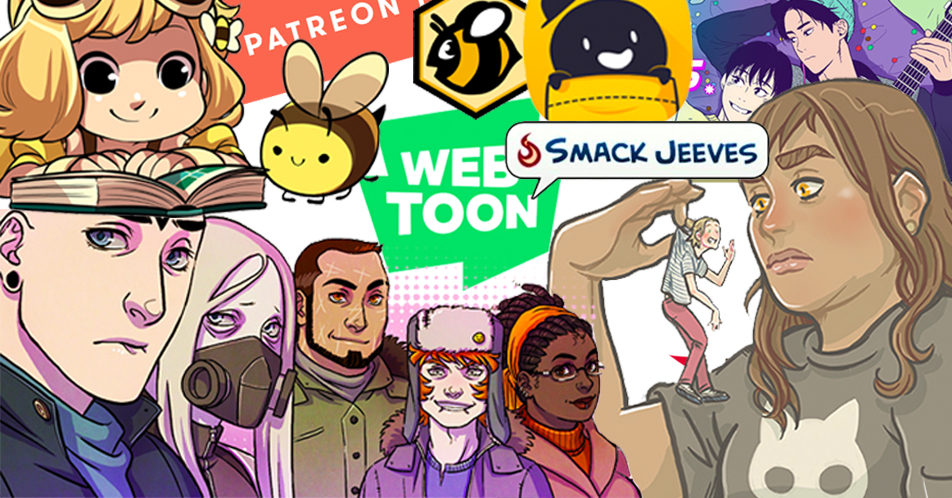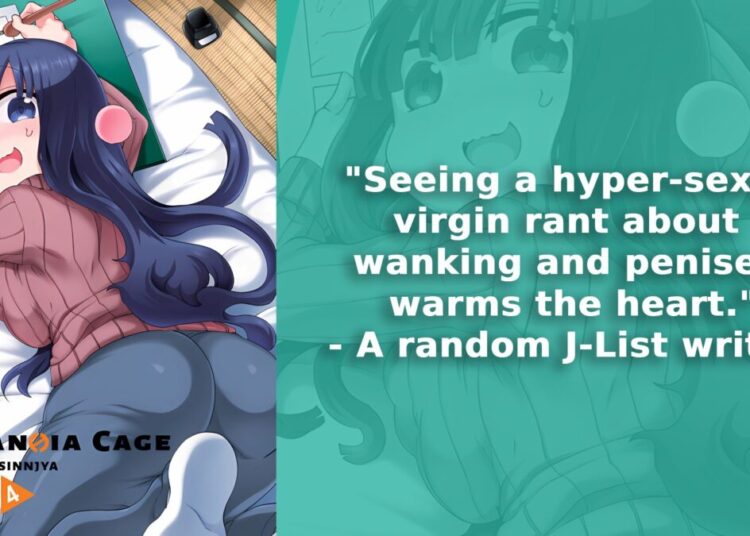Almost everyone is familiar with reading comics on the Internet these days. Webcomics originated during the early days of the World Wide Web, and reaching a colossal peak in the 2000s. Webcomics can be a vehicle for writers and artists to gain experience, for communities to identify with, or as a platform for fun, humorous education. Some are sudden hits, like Tumblr’s dedicated fervor with the Korean BL comic by creator Koogi, Killing Stalking. They can be viral hits, often turned into memes reposted on social media sites (often without credit) from works like Hyperbole and a Half, Shen Comix (formerly Owl Turd Comix), and The Oatmeal. Even relatively unknown comics can have vibrant communities who eagerly anticipate each and every update, such as Awful Hospital and Sister Claire.
But since webcomics are largely considered a staple of American internet culture, what does it have to do with manga? Simply put, Japan has skin in the game, so to speak. With Japan’s print readership in decline, mangaka and publishers have to find a way to gain new readers and keep old customers coming back for more. While releasing print mangas for digital distribution has covered some of the gaps, it can be hard to keep up with a reader base that is going digital.
Enter LINE Manga. Created just last year, it allows users to read free and paid-for licensed manga on their smartphones. With LINE being one of Japan’s most used messaging apps, there’s no doubt that the convenience is a huge plus for the Japanese reader base. While there are some criticisms of the site’s organization, those same criticisms don’t seem to be found in LINE Webtoon, the global webcomic version of LINE Manga.
Also known as WEBTOON, this webcomic publishing site was created in 2005 after Korea experienced a crash in the manhwa industry during the late 90s and 2000s. It launched globally in 2014 and steadily picked up partnerships with Stan Lee, Marc Silvestri of Image Comics, DeviantArt, and Patreon. WEBTOON, in this age of smartphones, aims to make publishing as easy as possible for their creators, from YouTube videos detailing uploading guidelines to Original (formerly Featured) creators having their marketing, PR, and editorial needs taken care of.
On the flipside for readers, accessibility and interactivity is the name of the game. Original comics can contain music, gifs, and animations for a more interactive and immersive experience. Readers no longer have to worry about a comic’s hiatus or losing access to their collection. Creators adhere to their own schedules and are generous with updates both through their comics and social media accounts. WEBTOON has clear icons that indicate when a comic has been placed on hiatus, has updated, or ended. All of its completed comics are kept in a clearly labeled section of the website.
Looking for a specific genre or wondering what’s popular with your peers? WEBTOON covers that as well, with metrics for popularity by gender and age group, as well as popularity by genre. It tracks the update schedules for their Original comics by day of the week. Want to bookmark a comic? WEBTOON keeps track of your subscriptions and where you are in your reading. Looking for your favorite comic in another language? WEBTOON has a vast volunteer community translating Original comics into different languages. Want to get started on your own comic? WEBTOON allows anyone to upload at any time, through the Canvas (formerly Discover) portion of their website.
Now that WEBTOON’s virtues have been extolled, we come to the other side of things. Even if there’s a platform running publishing for webcomics, are creators and readers actually benefitting from using a single mass platform for their publishing needs? Are webcomics planning to crush manga under its boot heels for good? Yes, creators are benefitting from using a mass platform by various degrees. Creators win because they don’t need to spend money on hosting, and they get support creating and advertising their work. They can still self-promote, advertise their Patreons, go to conventions, sell merch. Using a mass platform doesn’t change any of that.
Readers win because they get to discover new writers, artists, and stories, find a community within that, and give back to and interact with creators. Giving back to creators means that they can focus on creating work that people will love. Speaking of giving back, there are currently five webcomics up for an Eisner Award. They include The Contradictions by Sophie Yanow, Lavender Jack by Dan Schkade, Let’s Play by Mongie, Lore Olympus by Rachel Smythe, and Tiger, Tiger by Petra Erika Norlund. The winner for Best Webcomic will be announced July 19th, during San Diego Comic-Con. Hopefully, you’ll find a new favorite from these nominees.
As for the “death of manga,” that won’t be happening anytime soon. Both manga and webcomics have their place, and we’d hope mangakas and publishers take notice of the growing trends in order for mangakas to have a better work-life balance and keep creating the works we all know and love. Whether the example WEBTOON has created becomes the standard for reading manga and webcomics, only time will tell. Until then, here’s to hoping things only get better and brighter from here on out.















